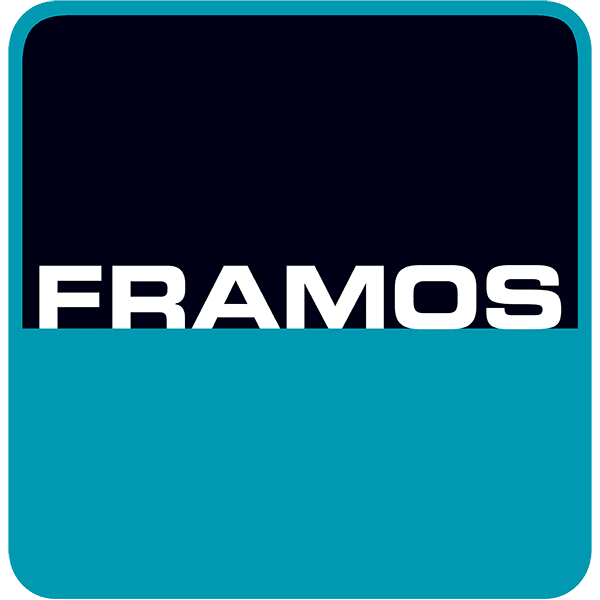When it comes to building imaging solutions from the ground up, it can be very challenging to know where to start. Where do you look to get information to help make better decisions when choosing a specific direction or approach to building your product? Though you are an expert in your field and understand the problem you are trying to solve, there are still times when you need to lean on others for help and advice. Having a good partner who understands your application and is near by can be a godsend, leading you down the correct path while giving you advice that is specific to your challenges.
What is a Partner?
A partner can take on many forms and help in many ways. The main commonality of any partner is that they are willing to take on some or all of the risk in designing, developing and/or producing a component or the complete build of your solution.
- They are experts in their respective fields and can provide advice and guidance on how best to implement specific technologie to
 achieve your goals
achieve your goals
- They will allow you to build your solution without the need for you to become an expert in their fields and they have a team of engineers built up already with the related core competencies that own all the knowledge needed to create your ideas.
With a partner in your corner, you can focus on your skillsets while they ensure you can provide a full solution that meets your customer demands. Depending on the partner, they can take on the design and development of the component or product, while providing full component life cycle management services that include managing stock levels or working with high volume Contract Manufacturers (CM) in key locations around the world. In essence, a partner can help take away many of the headaches involved with building and maintaining new products, especially for new, entrepreneurial companies that may not yet have the resources or experience in house to build their own products.
Not Engineering Services
You are probably thinking that partners sound a lot like engineering services (ES) but, in reality, they are not. The primary way in which they are different is on the scope and the risk they take on for each project. Engineering service contracts are setup to create a specific module of work based on predefined project requirements with contracts that are defined by their scope, schedule and deliverables. Once the work is complete, the relationship with the ES is usually done and it becomes your responsibility to implement the design, produce and manage the product through its life cycle. The scope of effort is project based and is contractual in nature. You are responsible for their full engineering costs and effort thus increasing your project’s total NRE expense, which usually needs to be paid prior to you getting any revenues from these products. On the plus side though, you gain access to the produced IP and can keep it as part of your own or evolve it in the future.
Where a partner differs is in that they can provide these same services while offsetting some or all of the NRE into the individual production unit prices. This greatly reduces your out of pocket costs on the NRE side by differing the payments over a longer term, like mortgage payments on a house. A partner will also have a more of a vested interest in a successful project and product as they are in it for the long run. Depending on the product being built and the chosen partner, existing partner IP can be leveraged to speed up the design and development of the product, however it could limit your access to use or own this IP in the future. If you do not plan on developing this product internally at a later date, this is a great way to save costs and decrease your time to market. Partners will also have the infrastructure in place to integrate the building of your product within their existing production lines reducing the risks of issues arising during this stage of your product life cycle.
Choosing a Partner
When it comes to choosing a partner, you are going to want to find one that matches the scope of deliverables you need for your project and/or solution. In some cases, you may need to work with multiple partners to achieve your end result (as one may not have all the capabilities needed to do it all) risk free.
Things to consider when choosing a partner:
- They should have experience in building and providing solutions similar to what you are looking for.
- Ask for references and examples of what they have done previously. How do they work? What is the quality they provide?
- Try to understand how they do business and what processes they have in place to ensure a successful completion of the project along. How it will be managed? How will you will be kept up to date with its progress?
- Look at all capabilities, not just the engineering and project management groups. Manufacturing capabilities and their New Product Introduction (NPI) processes are also important to understand.
- Spend time qualifying your partner to ensure that they have the abilities and the production capacity to take on your product builds. Can it scale up as your offering grows?
- Invest time to understand if they contract out some of the effort or manufacturing. What quality standards and specifications do they comply with?
- Wash, rinse, repeat: find multiple partners that are can do the job to compare each offering. You want to ensure that you are getting the best value for your money.
- Choose the one that best suits your requirements, your timelines, your quality expectations, at a price you can afford. Remember that the cheapest is not always the best value in the long run. With poor quality, you may end up spending more money buying replacement products. This will waste resources support them and ultimately cost you customers.
Build vs. Buy
You may be thinking: “Sounds like I want a hybrid of a Partner-Engineering Services model. Is there a way to get this?” In many cases, the answer is YES. Many companies that are starting out have no infrastructure to do some or all of the design, development and manufacturing so they are looking to outsource portions of this with the goal to slowly build up the teams to take this work back under their roof. There are many strategic reasons why it makes sense to take on more of the building of components vs. buying them off the shelf. Some of them include:
- Owning more of the design to make it more unique to your application
- Tweaking it to improve its performance specific to your applications
- Blocking out competitors as they cannot buy what you have built
- Fine tuning the production processes to get the best performance
- Reducing overall costs and controlling your supply management
If this is important to your product strategy, you will want to look for a partner that can be a supplier in the initial phases while slowly helping you develop and implement the structure to take on more of the design and development yourself.
Why FRAMOS as a Partner
As you can see, finding the right partner for you takes a lot of work and time. FRAMOS can help with this by leveraging our 37 years of experience in the Imaging industry to provide you with knowledge and advice on how to build and develop your Vision System. Our Sensor to Systems approach allows you to navigate the Build vs. Buy paths with ease, allowing you to focus on matters to you while still allowing you to own your solution at any point in time.
- With a team of over 40 engineers, we can answer your questions and provide you with customized solution to solve any imaging problem you have.
- Our extensive partner network provides us with further capabilities to create from the ground up completely unique solutions not available in the market.
- We leverage our network of partners who provide the best of the best vision products and services to compliment our internal engineering to provide you with a one stop shop for your distinct requirements.
- Our proven NPI processes, backed by our world class project managers, you can ensure that your project will get the attention it needs to bring your product to a successful outcome.
- Flexible business models allow you to manage costs while learning and gaining IP throughout the process to enable you to take on as much of the build of the final product as you would like.
- Multiple quotes provided from multiple suppliers at each phase of the project all the way into volume production that illustrate typical market rates and options
Proof in the Pudding
How have we helped other clients? Here are a few samples of projects we have done for our clients.
Problem 1: Client wanted to add a customized algorithm that allowed them to detect a laser line within the field of view and do some minor data analysis on the region around the line and pass back only a portion of the image around each point of the laser line. In essence, they were looking for a low cost, multi-line line scan camera that could “bend” as the laser line bends in the field of view. They had been using a previous supplier for the camera portion of their solution and doing the image segmentation on the host PC. This proved to be slow and processor intensive, so they were looking to offload some of the processing onto the camera. When the approached their supplier to see if they could incorporate their algorithms into the camera, their volumes did not justify to the supplier to create a variant of their product.
Solution: As this was an important part of our client’s solution, they reached out to FRAMOS for options on how they could achieve their requirement. The FRAMOS engineering team worked with our client to define the requirements and engaged one of our camera suppliers to incorporate the algorithm into their camera. On top of this, they had some unique electrical and mechanical needs with respect to the configuration of the board level camera design that were also designed and implemented. In the end, our client was able to get a unique product that met their requirements and allowed them to differentiate their product in their market.
Problem 2: The analog camera a client had been using for years went end of life and there was no suitable replacement in sight for their very unique application. They searched for a camera that could meet their needs but could not find one until they talked with our FRAMOS team.
Solution: It was decided to create a fully custom camera that could fit within their unique enclosure that had previously designed for the original analog camera yet providing a digital solution that could capture images and transmit them to a screen over 100 m away. Captured images are digitized and transferred over the length of the camera to a remote monitoring station where they are converted back and displayed to a monitor. Command and control of the camera are managed at the remote end while the camera is fully enclosed inside a small robust enclosure provided by the client as their value add to the overall solution.


 achieve your goals
achieve your goals 










